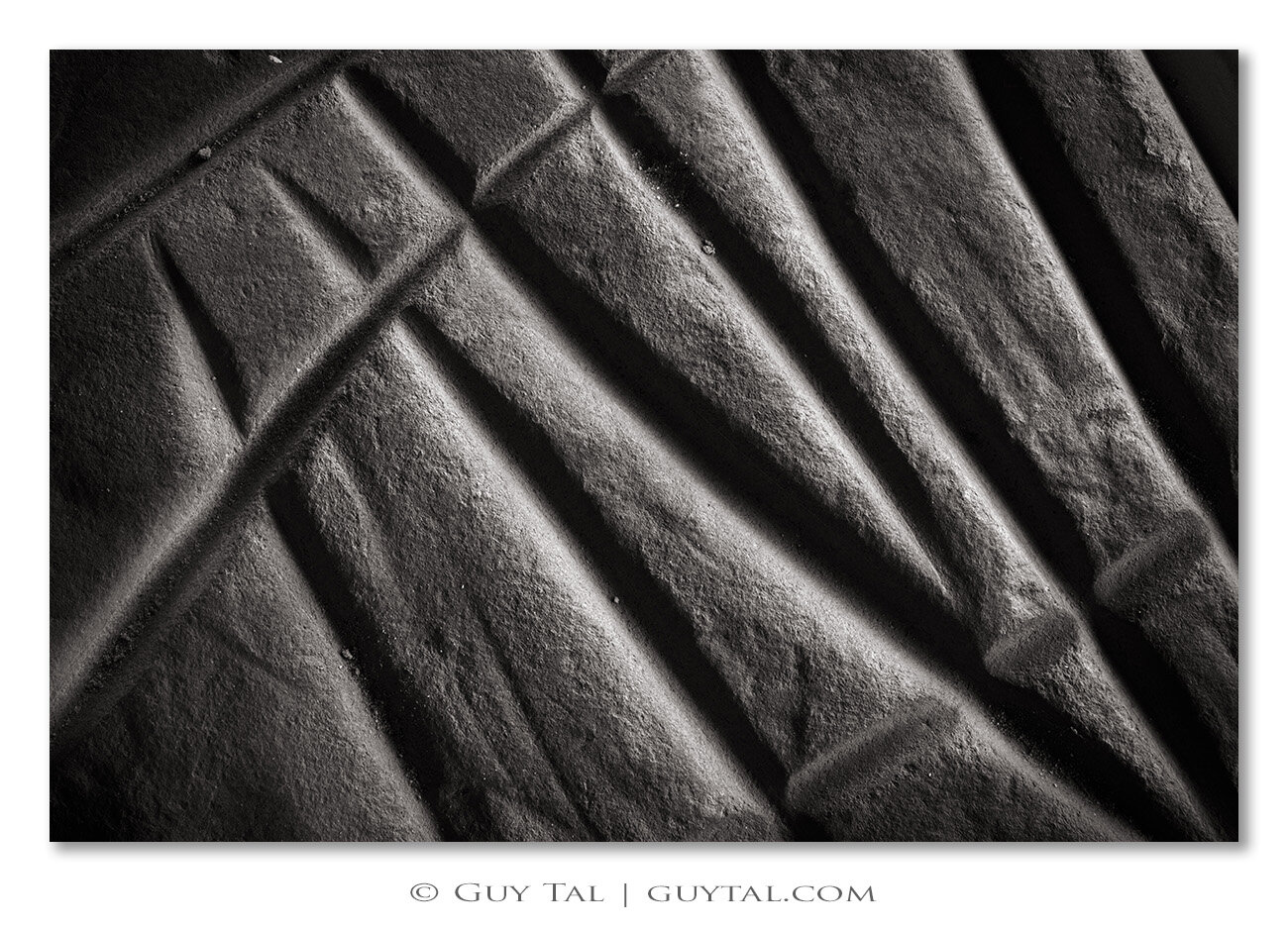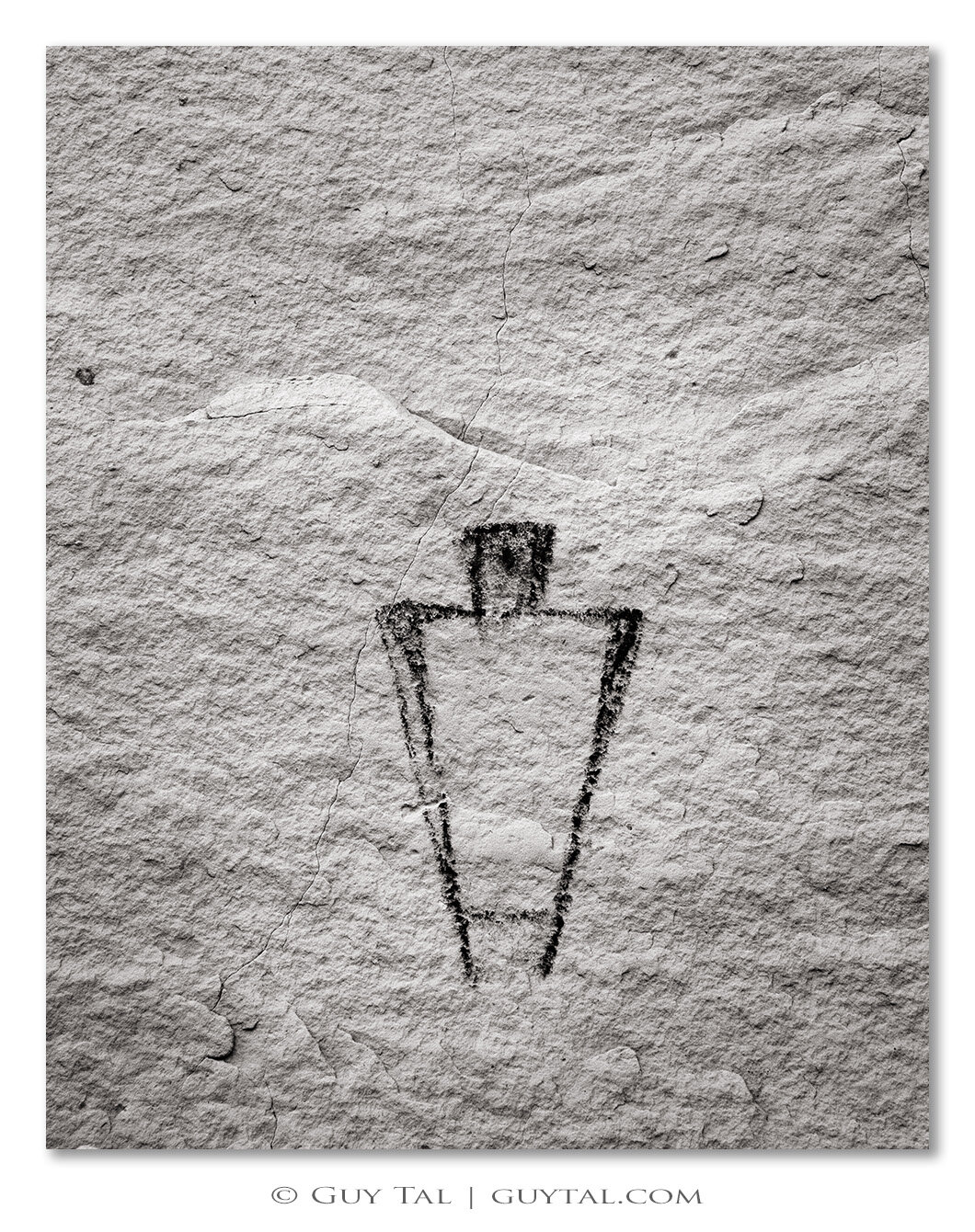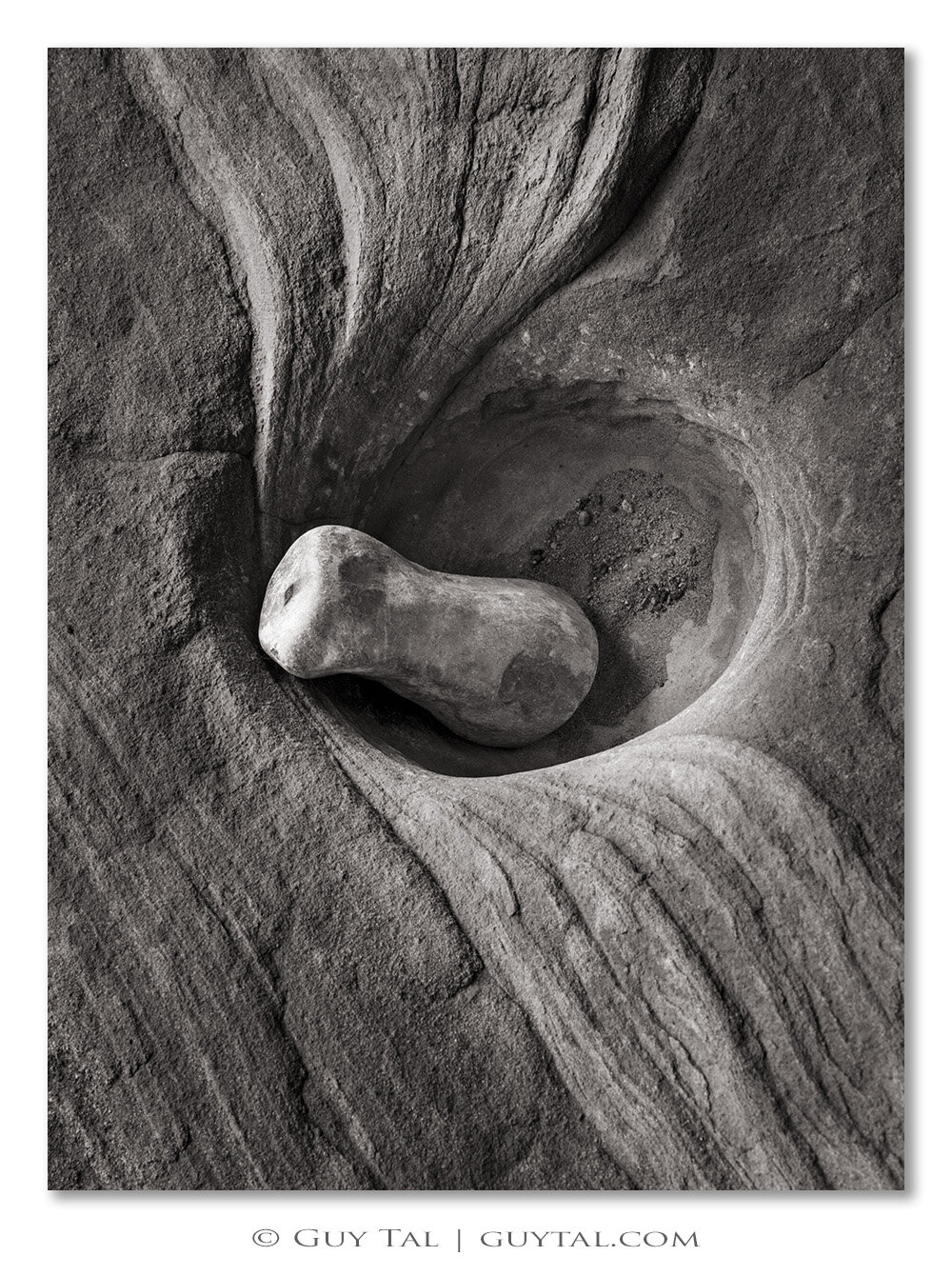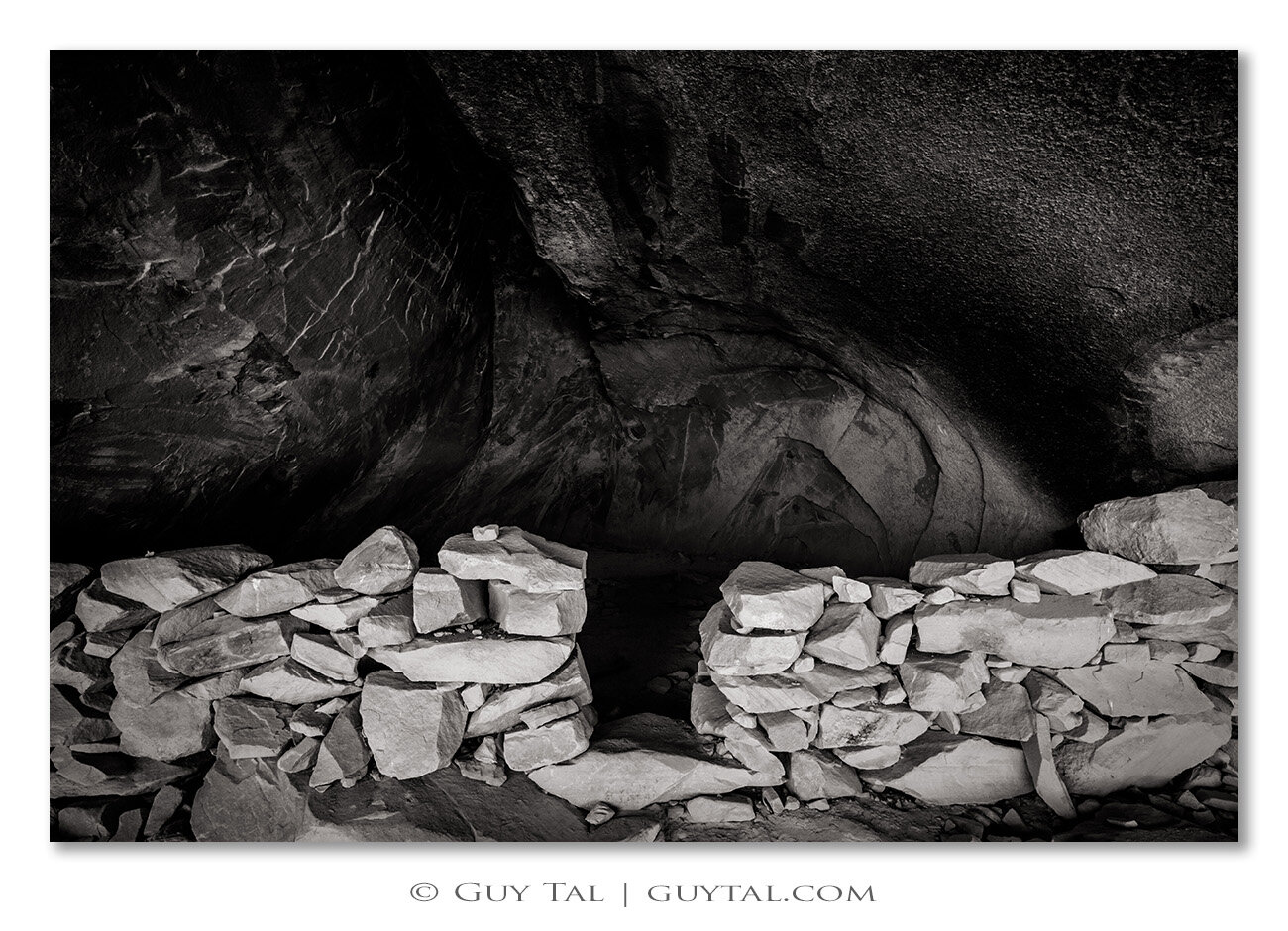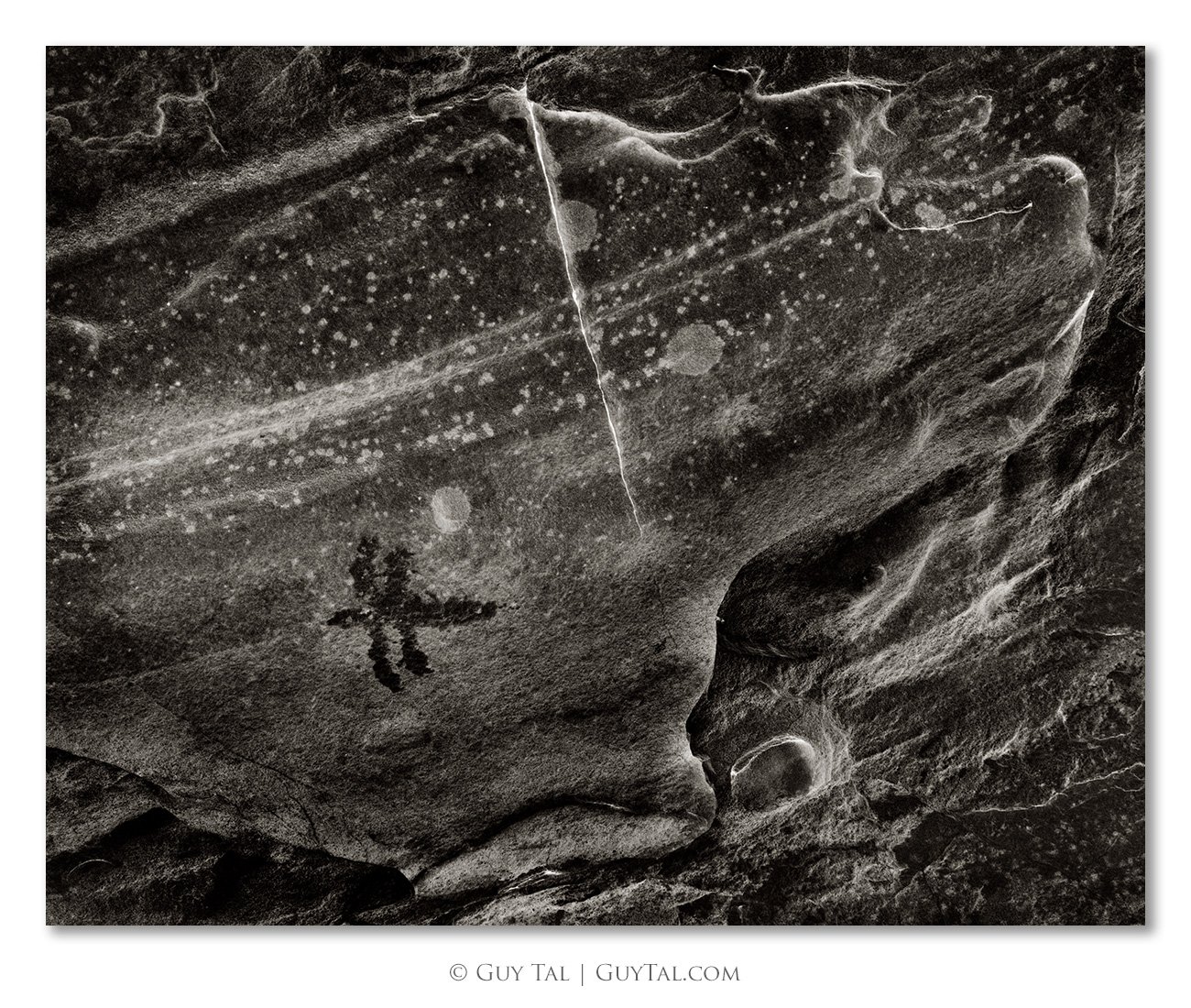Mystery People
Mystery People
Note: Clicking on any thumbnail below will bring up a larger version of that image, displayed in a lightbox. Once in the lightbox, you may bring up additional image information by hovering your cursor over the image. To return to this gallery page, click the “X” icon on the top right corner of the lightbox.
Settlers of white European descent are very recent arrivals in the desert areas where I live and where I do most of my work. The first white people to explore the canyons of the Colorado River were members of the John Wesley Powell expedition, just 150 years ago. Various Native American cultures have occupied these places for more than ten thousand years.
Although none of my ancestors ever settled in the Americas (to my knowledge), I can’t help but feel deep sorrow for the ways some of these native tribes were treated and abused in the course of the conquest of the Americas—likely the greatest genocide in history.
Remnants of ancient people are abundant in some places and very scarce in others. Anywhere humans lived, they left some remnants: rock art (petroglyphs and pictographs), structures (some still intact, which is why I am reluctant to refer to them as ruins), grinding and cooking tools, knives and points, and decorated pottery shards.
We know little of the older cultures that settled here. Some were hunter-gatherers, some agrarian, and some built spectacular temples—the tallest buildings in the world, in their day. Alas, as the saying goes, history is written by the victors; but when it comes to Native American cultures, the victors have also done a thorough job of erasing history—forcing people to abandon their cultures, ceremonies, and rituals; destroying scriptures and temples, and killing religious leaders—leaving precious little for us to learn from about these ancient people



